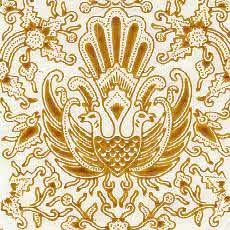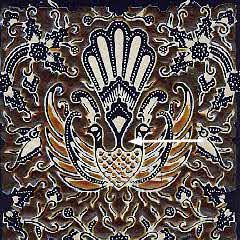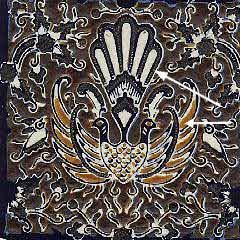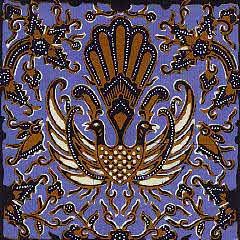As we've already known, canting is the most important thing in batik tulis process. Without the canting, you can't call your result as Batik. Of course, there are important parts of the canting itself. Also, there's a lot of canting type based on the function, the size of the spout and the number of spouts. But before we learn this, we must know what IS canting itself.
So, what is canting?
The canting is the primary utensil used in the batik process which determines whether the results of the work may be called batik or not. The canting is used to write (draw with liquid wax), making the batik motifs desired. It is made of copper. Copper has the quality of lightness, is easily bent, and is strong, though thin.
Parts of Canting
1. Gagang Terong
The Gagang Terong is the tail end of the canting utensil, placed on the back, to be appended to the real handle. Gagang = stem; terong is the name of the trumpet-flowered or Solanaceae species (eggplant)
2. Nyamplungan
The nyamplunga is the main part of the canting, the body or basin. It is used to scoop the liquid wax out of the wajan (pan) just before batiking. It is called nyamplungan because its form and size reminiscent of the nyamplung, a small round fruit like a ball (Rhegma family)
3. Carat or Cucuk
The carat or cucuk is the part formed like a bent pipe which forms the channel through which the liquid wax in the basin passes intin the cloth in the batik process. Cucuk actually means a bird's beak. Carta is a drinking vessel.
TYPES OF CANTING
1. By function:
a. The Rengrengan Canting
This canting is used to draw the initial figuration or outlines- i.e the rengrengan. Performing this work is called ngrengreng. The pattern followed in this initial figuration is in copy of a specimen. Rengrengan can also be interpreted as framework. Usually the Renrengan Canting is used to make this framework (i.e the outline), whereas the fill-in (isen) of the field is batiked with the Isen Canting in accordance with the details desired. The resultant batiked cloth shows the pattern in either outline or, when filled-in, the entire motif. The Rengrengan canting has a medium-sized, single spout.
b. The Isen Canting
The Isen canting is a stylus used in filling-in the field with complementary motifs. It has a small spout and may have one or more sprouts.
2. By the size of the spout:
a. Small-spouted canting
b. Medium-spouted canting
c. Large-spouted canting
3. By the number of spouts:
a. Cecekan Canting
The Cecekan Canting has one small spout, used to make small dots. Making small dots with this tools is called "nyeceki". The cecekan Canting may also be used to draw little lines.
b. Loron Canting
The world loron derives from 'loro' which is the number 2. This stylus has two spouts, one on top oh the other, used to make double lines.
c. Telon Canting
The word telon derives from 'telu' which is the number 3. This stylus has three spouts in triangular placement. When it used to batik, small triangles formed of three dots appear in the fill-in.
d. Prapatan Canting
The word prapatan derives from the word 'papat' which is the number 4. Therefore, this canting has four spouts, used to make the four corners of a square to fill-in the field.
e. Liman Canting
The world liman derives from the word 'lima' which is the number 5. The stylus has five spouts to make small squares formed of four corner dots with one dot in the centre.
f. Byok Canting
The Byok Canting is a stylus which has 7 or more spouts, used to form small dotted ellipses; the number of dots determined by the number of spouts or the size of the ellipse. The spouts of the Byok canting are ordinarily odd in number.
g. Renteng/Galaran Canting
The word galaran derives from 'galar' which is a sleeping mat made from bamboo split lengthwise. Renteng is a series sof something placed paralelly; a method of connecting or combining through pricking. A Renteng or Galaran Canting has always an even number of spouts, four to six, laid from bottom to top.
Click here to read more!


















